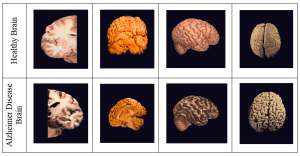Alzheimer’s Puzzle Deepens as Scientists Find 200 Hidden Proteins Driving Damage
London, August 2, 2025:
In a discovery that could transform the scientific understanding of Alzheimer’s, researchers have identified more than 200 previously hidden proteins that appear to play a key role in the progression of the disease. The study, led by scientists at University College London (UCL) and published in the journal Nature Neuroscience, opens new avenues for developing treatments aimed at slowing or even preventing Alzheimer’s.
The researchers used cutting-edge proteomics techniques to examine post-mortem brain tissue from patients diagnosed with Alzheimer’s. By mapping proteins not detected in earlier studies, they uncovered a complex network of molecular changes that could help explain why the disease advances so aggressively in some individuals.
Shedding light on Alzheimer’s complexity
For decades, scientists have known that abnormal build-up of amyloid-beta plaques and tau tangles are hallmarks of Alzheimer’s. But these new findings suggest there is a much broader and intricate set of molecular processes involved.
Dr. Emma Cartwright, lead author of the study, explained: “While amyloid and tau remain central to Alzheimer’s, our research shows there are hundreds of additional proteins that may influence disease onset and progression. Many of these hidden proteins had never before been linked to Alzheimer’s.”
Hidden proteins and disease progression
The study revealed that these newly discovered proteins seem to cluster around regions of the brain heavily affected by Alzheimer’s, such as the hippocampus and cortex. Many of these proteins are involved in inflammation, synaptic health, and cellular stress responses—areas already suspected of contributing to this different psychological state but not fully understood.
“This discovery could help explain why two people with similar levels of amyloid and tau pathology might experience very different symptoms and rates of decline,” said Dr. Cartwright. By targeting these hidden proteins, scientists hope to create more personalized therapies for patients with this disease.

Implications for treatment and early detection
Current treatments for this disease are limited and mainly manage symptoms rather than altering disease progression. The identification of over 200 new protein targets provides fresh opportunities to design drugs that may slow or stop it at earlier stages.
Professor James Nolan, a neuroscientist not involved in the study, called the findings “a major leap forward” in the fight against this psychological disease. “For the first time, we have a broader map of the molecular landscape of this psychological stage, which could help explain why clinical trials targeting amyloid alone have often failed,” he added.
A technological breakthrough in Alzheimer’s research
The success of the study hinged on a powerful technique called deep proteome profiling, which allows scientists to detect even faint signals from previously overlooked proteins. Researchers believe this technology will be essential for uncovering other hidden drivers of Alzheimer’s and related neurodegenerative diseases.
“This approach has helped us see what was effectively invisible until now,” Dr. Cartwright noted.
Hope for patients and families
For millions of families affected by this disease, this discovery offers hope that science is closing in on answers that have eluded researchers for decades. While experts caution that translating these findings into effective treatments will take time, the study marks a significant milestone.
“Every new piece of the puzzle helps us understand this disease better,” said Dr. Cartwright. “With these newly identified proteins, we can now explore therapeutic strategies that were not even on our radar before.”

Looking ahead
Researchers plan to investigate how these proteins interact with known risk factors for this disease, such as age, genetics, and lifestyle. Future studies could also explore whether levels of these hidden proteins in blood or cerebrospinal fluid might serve as early biomarkers for this disease.
As the global burden of Alzheimer’s continues to rise, breakthroughs like this highlight the urgent need for continued investment in brain research. While challenges remain, scientists are optimistic that unlocking these hidden molecular secrets could one day help change the course of Alzheimer’s disease.
Also read: https://channel6network.com/rape-conviction-sees-prajwal-revanna/

